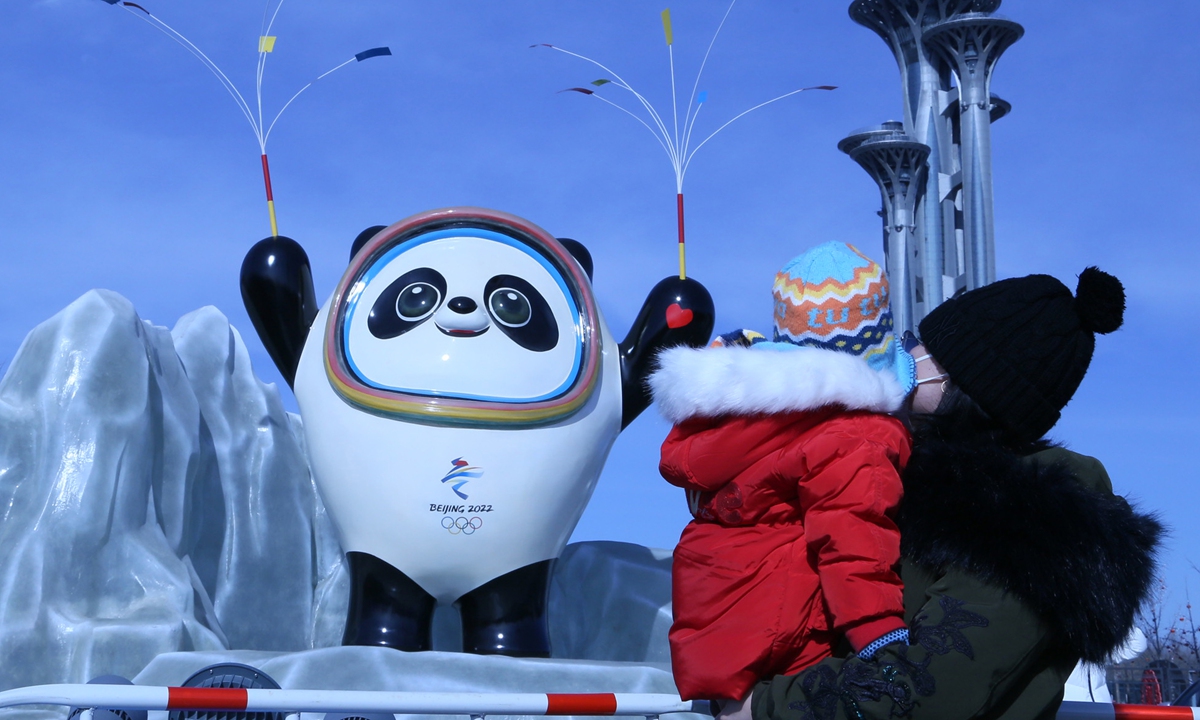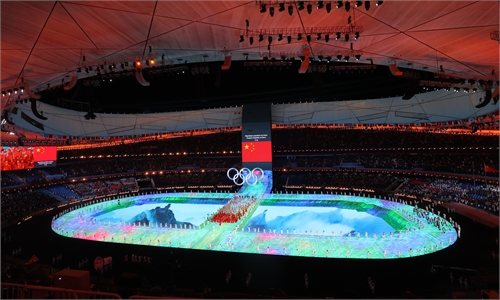Beijing 2022 Olympic and Paralympic Winter Games has a gain of $52 million: organizing committee

Residents in Beijing take pictures with Bing Dwen Dwen, the mascot for the Beijing 2022 Winter Olympic Games, on February 6, 2022. The cuddly mascot is currently in short supply in China and stores have restricted purchases by customers. Photo: VCG
The income of Beijing Organizing Committee for the 2022 Winter Olympic and Paralympic Games stood at 15.39 billion yuan ($2.29 billion), with its expenditure reaching 15.04 billion yuan ($2.24 billion). The balance was 350 million yuan ($52 million) in profit, the committee unveiled on Sunday.
The largest income came from domestic market development and authorized business revenues under a series of permission contracts signed with the International Olympic Committee (IOC), which totaled 11.13 billion yuan. Sponsorship from the IOC reached 3.78 billion yuan including proportional revenues from the Games' global marketing and broadcasting rights.
As to the event's expenditure, the largest cost was human resources, including wages, training of volunteers, and purchasing personnel uniforms, which totaled 2.8 billion yuan. A total of about 4.7 billion yuan was spent for items related to technical support and services for participants, including athletes and media.
The organizing committee spent 1.87 billion yuan on construction of multiple stadiums used during the Olympic and Paralympic Winter Games. A total of 1.33 billion yuan was spent on sport competitions. Other activities including ceremonies, publicity and cultural events cost 1.57 billion yuan.
To ensure the success of the Beijing 2022 Olympic and Paralympic Winter Games, the organizing committee actively conducted funds conservation and income arrangements and budget control, and minimize costs, the officials said.
According to Statista, an online database, the cost of PyeongChang 2018 Olympic and Paralympic Winter Games in South Korea was about $12.9 billion, and the cost of Sochi 2014 Olympic and Paralympic Winter Games in Russia hit about $50 billion.
Global Times



